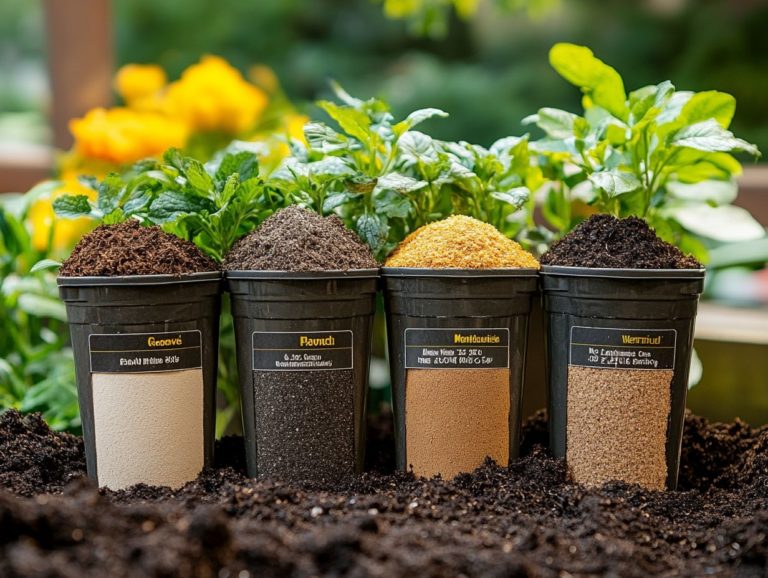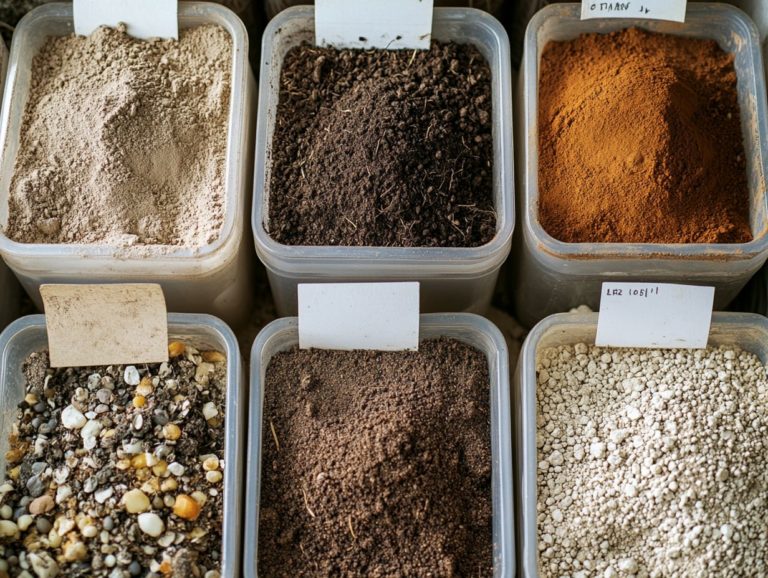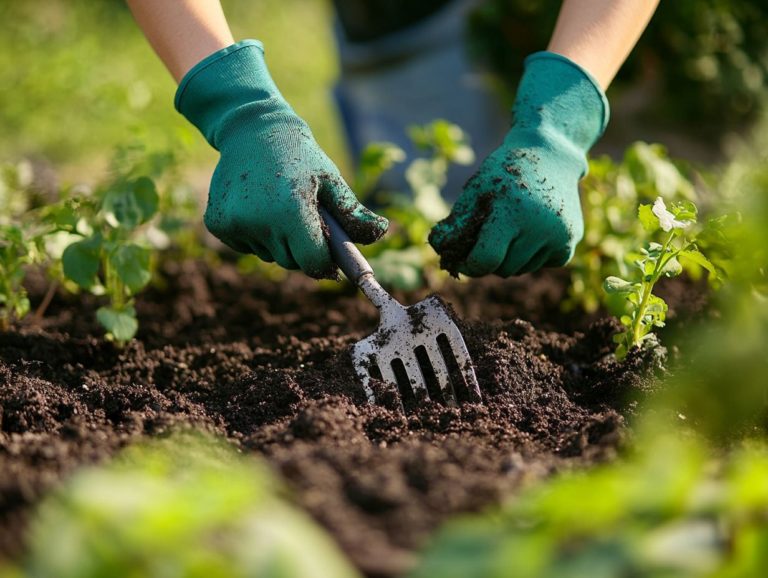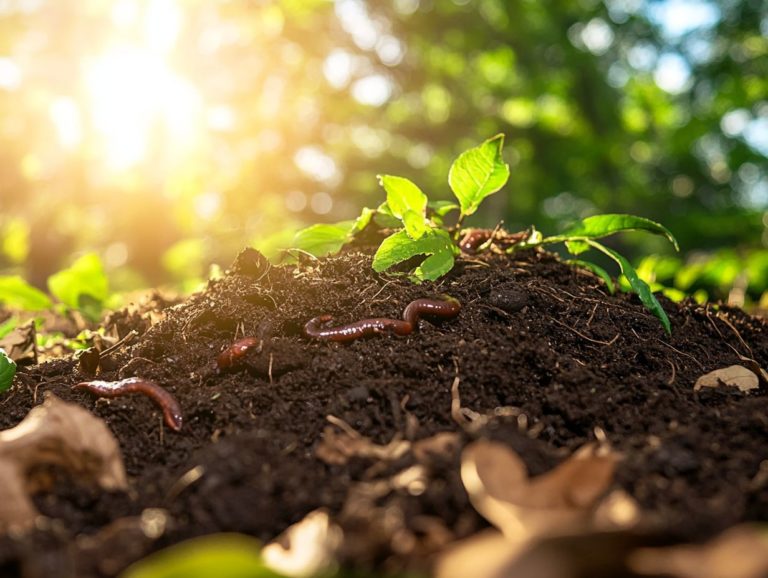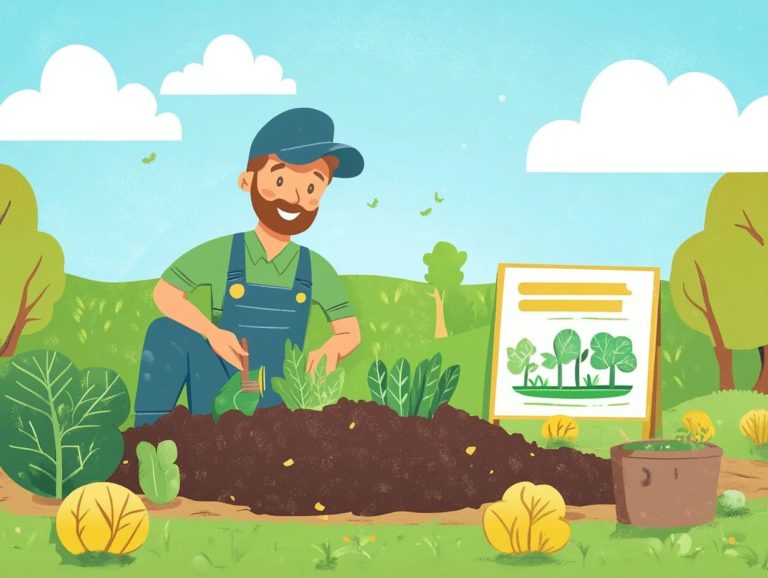The Benefits of Soil Covering Techniques
Soil covering techniques are invaluable tools for fostering sustainable agriculture and enhancing soil health. By effectively shielding the ground, you can improve soil quality while significantly reducing erosion and runoff. These methods are vital in boosting plant growth and productivity.
This article delves into the numerous benefits of soil covering, from enhanced soil health to increased yields, while outlining techniques such as mulching, cover cropping, and no-till farming.
Throughout the discussion, we will highlight best practices and potential challenges, ensuring you are thoroughly prepared to implement these strategies with confidence.
Contents
- Key Takeaways:
- Benefits of Soil Covering
- Types of Soil Covering Techniques
- Implementing Soil Covering Techniques
- Potential Challenges and Solutions
- Frequently Asked Questions
- What are the benefits of using soil covering techniques?
- How does soil covering help conserve soil moisture?
- Can soil covering techniques prevent erosion?
- What are the different types of soil covering techniques?
- How does soil covering improve soil health?
- Are there any additional benefits of using soil covering techniques?
Key Takeaways:
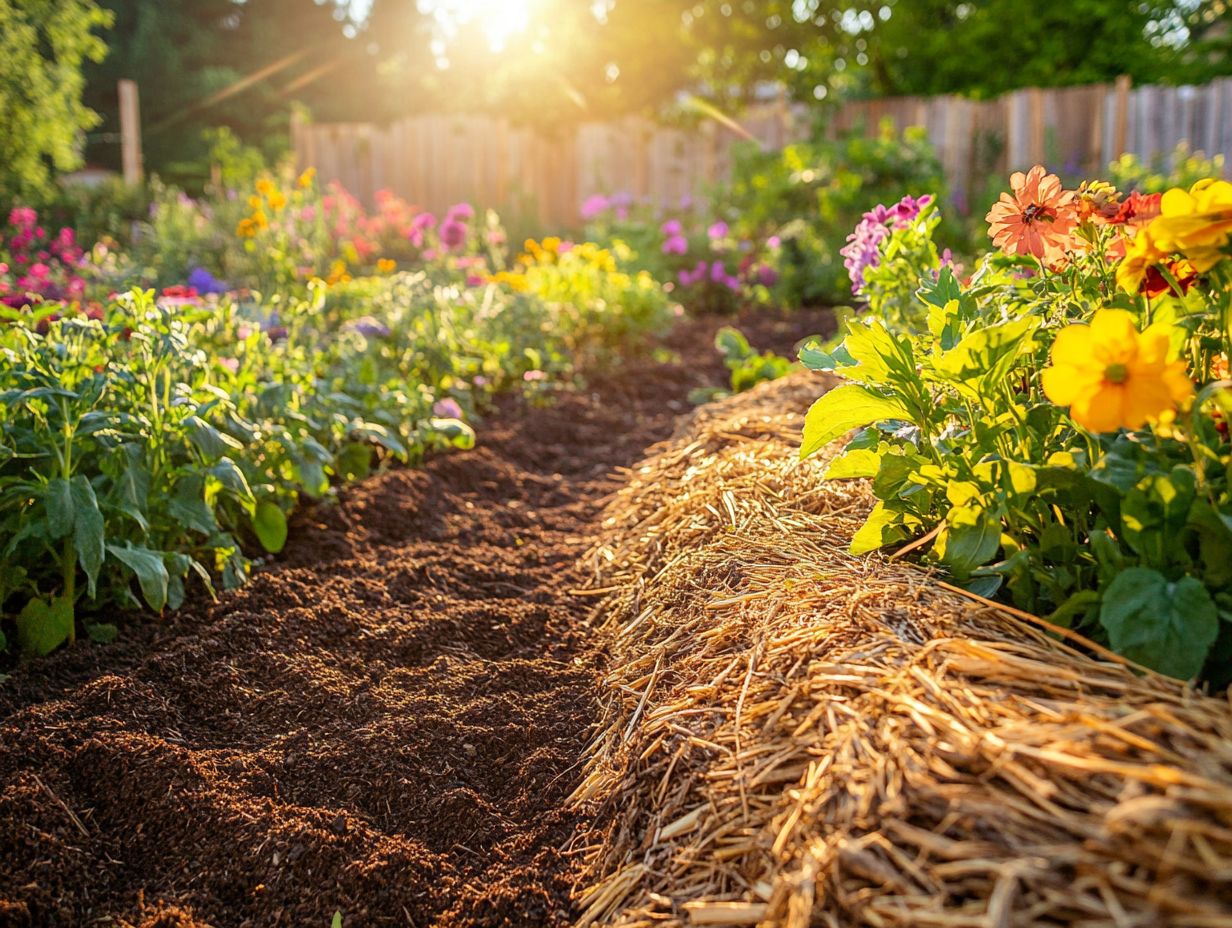
- Soil covering improves soil health by protecting it from harsh weather conditions and promoting nutrient retention.
- It helps prevent erosion and runoff, which can lead to water pollution and loss of valuable topsoil.
- Using soil covering techniques like mulching, cover cropping, and no-till farming can lead to increased plant growth and production.
What is Soil Covering?
Soil covering is an essential agricultural practice that involves employing various materials or plants to safeguard and enhance the vitality of your soil in market gardening and other agricultural endeavors.
By adopting soil covering techniques, you can significantly improve soil health, ensure moisture retention, suppress weeds, regulate temperature, and promote biodiversity each of which is crucial for sustainable agriculture.
This practice not only protects your land today but also secures it for future generations!
You have a variety of methods at your disposal, including organic mulches, living mulches, and inorganic mulches, each contributing uniquely to the health of your soil ecosystem and the crops thriving within it.
This vital practice encourages robust plant growth and dramatically reduces erosion and nutrient loss, ensuring your land remains productive over the long haul. For instance, organic options like straw, wood chips, and grass clippings enhance soil fertility as they decompose, enriching your soil with essential nutrients.
Conversely, inorganic materials such as landscape fabric can effectively keep weeds from growing without contributing organic matter. This balanced approach leads to better soil structure and temperature regulation.
The choice of soil covering material should align with your specific agricultural goals, local climate, and crop requirements. However, implementing these methods will invariably lead to improved moisture retention and increased biodiversity within your ecosystem.
Benefits of Soil Covering
Soil covering provides a wealth of benefits essential for maintaining soil health and fostering sustainable agricultural practices. It enhances moisture retention, effectively suppresses weeds, regulates temperature, and protects overall soil quality.
By embracing soil coverage, you cultivate an environment that nurtures biodiversity and enhances soil organic matter, leading to healthier crops and improved yields.
Improved Soil Health
Improved soil health stands out as one of the most compelling benefits of soil covering. It enhances the organic matter content, promotes a natural process where nitrogen moves in and out of the soil, and supports a vibrant ecosystem filled with essential organisms like earthworms, legumes, and even beneficial fungi.
By nurturing a flourishing soil environment, you can cultivate resilient crops that thrive under varying conditions.
One particularly effective strategy is the use of organic mulches. Not only do they suppress weeds, but they also decompose gradually, enriching the soil with vital nutrients and promoting moisture retention.
Cover crops such as clover and rye are crucial for nitrogen cycling; they fix atmospheric nitrogen and enhance soil structure. Implementing these practices significantly boosts soil organic matter, creating a rich habitat for beneficial microbes and organisms that elevate soil fertility and aid in biodiversity promotion.
As a result, the ecosystem becomes more robust, improving water retention and reducing soil erosion. This ultimately leads to healthier plants and sustainable agricultural practices, ensuring that you reap the rewards of a thriving landscape.
Reduced Erosion and Runoff
Reduced erosion and runoff are essential benefits of implementing soil covering techniques. These methods significantly protect soil and enhance moisture retention.
Both aspects are vital for crop growth and sustainability. By minimizing the effects of rainfall and wind on exposed soil, you can reduce soil loss and improve water quality.
Various mulching techniques, such as straw, wood chips, and biodegradable materials, play an instrumental role in this process. For instance, straw mulch serves as a barrier against heavy rainfall and helps stabilize soil temperature.
This creates a better environment for root development. Research indicates that farms employing these techniques experience improved water infiltration and retention, resulting in healthier crops and increased yields.
Cover crops protect the soil during the off-season and enhance nutrient availability while mitigating erosion. Imagine cultivating resilient agricultural systems by adopting these simple strategies!
Watch Your Plants Thrive!
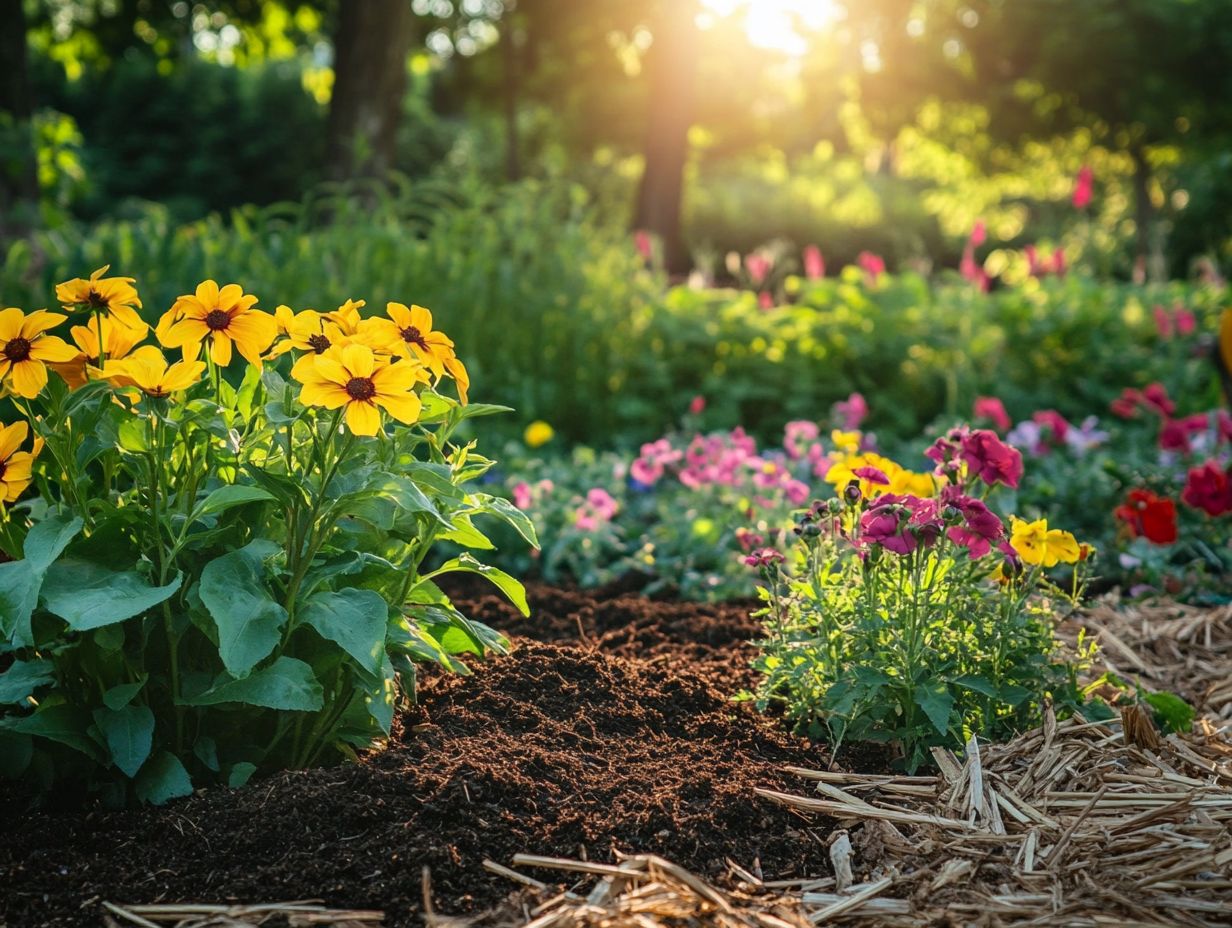
You ll often notice that effective soil covering practices lead to increased plant growth and production. This improvement stems from better soil structure, moisture retention, and managing nutrients, which are crucial for thriving crops in market gardening.
Healthy soil nurtures vibrant plant life, resulting in higher yields and enhanced agricultural sustainability. By incorporating organic materials like cover crops or mulch, you can boost microbial activity in the soil.
Microbial activity refers to the life and processes of tiny organisms that enrich the soil. These practices also help retain moisture, suppress weeds, and regulate temperature, allowing your crops to flourish.
This harmonious relationship between soil health and efficient nutrient management maximizes your crop yields and fosters ecological balance. This reduces the dependence on chemical fertilizers.
Start using these techniques today to see a difference in your crops! Sustainable agriculture practices through effective soil covering pave the way for resilient farming systems that support both economic viability and environmental stewardship, promoting better biodiversity in the process.
Types of Soil Covering Techniques
You have a range of effective soil-covering techniques at your disposal to protect and enhance your soil. Consider leveraging mulching, cover cropping, and no-till farming as part of your sustainable agriculture practices.
Each method employs different materials and approaches, including organic mulches, living mulches, and inorganic mulches. By understanding these techniques, you can select the options that best align with your specific agricultural practices and aspirations.
Mulching
Mulching is an excellent soil-covering technique you can use to apply a layer of materials directly onto the soil surface. This can include organic options like straw and wood chips or inorganic choices like plastic.
This method enhances moisture retention and effectively suppresses weeds, protecting soil health and contributing to improved crop yields in your market gardening endeavors.
Your selection of mulching materials can vary significantly based on your specific goals and environmental conditions in agriculture. Organic choices, such as shredded leaves or grass clippings, break down over time, enriching the soil with vital nutrients.
In contrast, inorganic mulches like landscape fabric or stones offer long-term weed control without the hassle of frequent replenishment. By employing effective mulching practices, like layering materials for a thicker barrier, you can substantially enhance moisture retention.
You can also use black plastic to warm the soil in early spring, leading to healthier plants and more abundant harvests. This contributes to the success of market gardening.
Cover Cropping
Cover cropping is a sustainable agriculture practice. It involves cultivating specific crops, like legumes, during the off-season. This enhances soil organic matter and improves nitrogen cycling.
This technique is vital for maintaining soil fertility and structure. Ultimately, it benefits the crops in your market gardening efforts.
Incorporating cover crops into your rotation boosts microbial activity, creating healthier ecosystems above and below ground. For example, clover and vetch fix atmospheric nitrogen, making it accessible for your next crops.
These cover crops also enrich organic matter as they decompose. This added organic matter improves soil texture, promotes water infiltration, and helps retain moisture, especially during dry spells.
The diverse root systems of these cover crops prevent soil erosion and compaction. This further enhances your soil’s health.
No-Till Farming
No-till farming is an innovative approach that minimizes soil disturbance. By avoiding traditional plowing methods, it preserves soil structure and enhances moisture retention.
This technique is vital for promoting soil health and ensuring sustainable agriculture. It maintains the integrity of the soil ecosystem.
Allowing organic matter to remain undisturbed creates a welcoming environment for beneficial microorganisms and earthworms. This significantly improves nutrient cycling.
You ll see increased crop yields and reduced erosion as the soil retains more water and nutrients.
Take, for example, regions like the Midwest United States. Growers there have embraced no-till farming, reporting healthier crops, lower input costs, and a marked decrease in reliance on chemical fertilizers.
These practices bolster sustainability and promote a variety of plants and animals.
Implementing Soil Covering Techniques
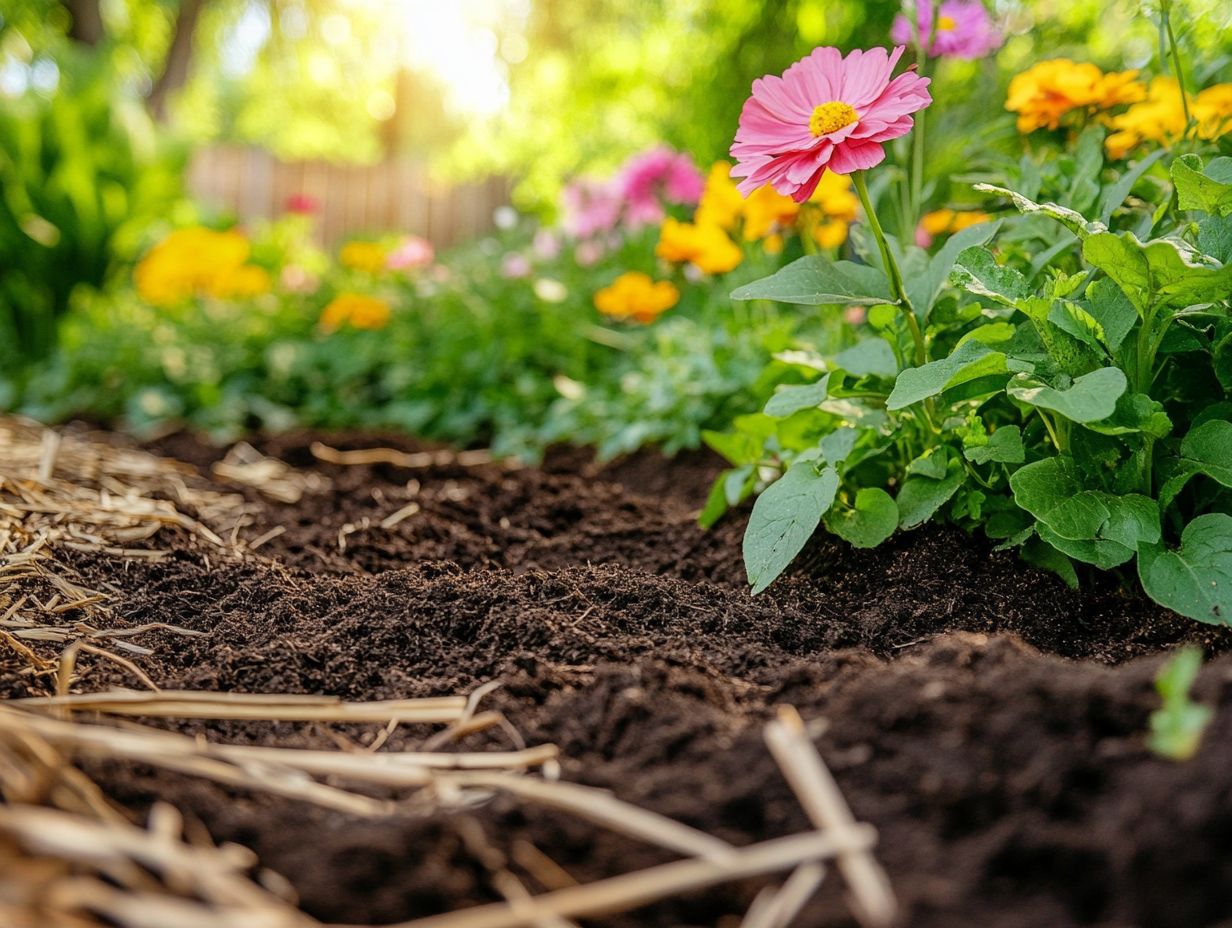
Implementing soil covering techniques with precision demands adherence to best practices. This is especially important when integrating these techniques with sustainable agriculture and crop rotation strategies.
As you strive to enhance soil health and productivity, understanding these practices is essential for successful outcomes. These will support agriculture.
Best Practices and Tips
To maximize the benefits of soil covering in your market gardening, focus on best practices that prioritize moisture management and effective weed suppression. Key strategies include selecting the right materials and understanding your local conditions.
Opting for organic mulches, like straw or wood chips, helps retain moisture and improves soil structure as they break down. Assess your local climate and soil types to identify the most suitable covering material.
Regularly checking moisture levels and fine-tuning your watering schedules can boost the effectiveness of these techniques. Keeping a planting diary is also smart; it allows you to track changes in soil health.
This ultimately enriches the overall yield and sustainability of your gardening practices, contributing to a variety of plants and animals.
Potential Challenges and Solutions
While soil covering techniques present numerous advantages, you may face challenges that could impede effective implementation. These obstacles can include resource limitations, climate variability, and varying soil conditions affecting temperature regulation.
Recognizing these challenges and crafting innovative solutions is crucial for maximizing the benefits of soil covering in sustainable agriculture.
Overcoming Obstacles
Overcoming obstacles to effective soil covering demands a complete strategy that combines innovative practices with your knowledge as a farmer. It also involves sustainable agricultural methods tailored to specific challenges like soil protection and weed suppression.
By harnessing community resources and exchanging insights, you can forge successful solutions today! These efforts not only enhance soil health but also boost productivity.
Participating in collaborative workshops and forums enables you to share experiences and best practices. This nurtures a community-driven approach to soil management that incorporates living mulches plants that cover the soil and cover crops, which are grown to cover the soil rather than for harvest.
Embrace technology to identify the most effective soil covering techniques suited to various ecosystems. By prioritizing sustainable practices like crop rotation and cover cropping, you re not just improving soil quality; you re actively contributing to long-term ecological balance.
With support from local agricultural organizations like the USDA, your innovative ideas can flourish, leading to a resilient farming community committed to sustainable progress.
Frequently Asked Questions
What are the benefits of using soil covering techniques?
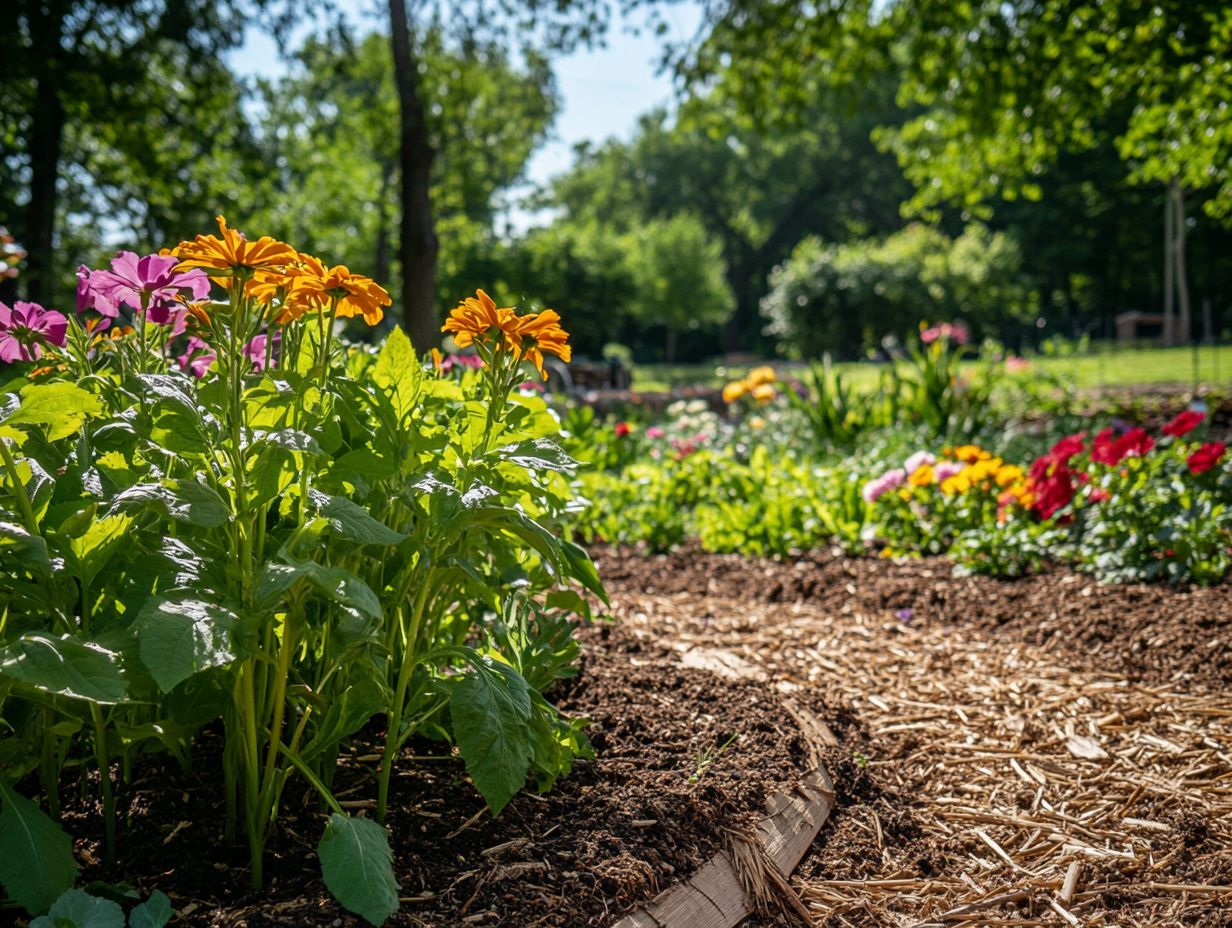
Soil covering techniques conserve moisture, prevent erosion, and enhance soil health. They also reduce the need for irrigation and fertilizers, control weeds, and increase crop yields.
How does soil covering help conserve soil moisture?
Soil covering, such as organic mulches, retains moisture by reducing evaporation. This is crucial in dry climates or during drought.
Can soil covering techniques prevent erosion?
Yes, they provide a protective layer over the soil, absorbing the impact of rain or wind and minimizing erosion.
What are the different types of soil covering techniques?
Types include mulching, cover cropping, and using ground covers or living mulches. Each technique offers unique benefits.
How does soil covering improve soil health?
Soil covering boosts soil health by adding organic matter, regulating soil temperature, and providing habitats for beneficial microorganisms like fungi. This fosters healthier, more fertile soil.
Are there any additional benefits of using soil covering techniques?
Beyond conserving moisture, preventing erosion, and improving soil health, these techniques contribute to sustainable farming practices that support conservation.

